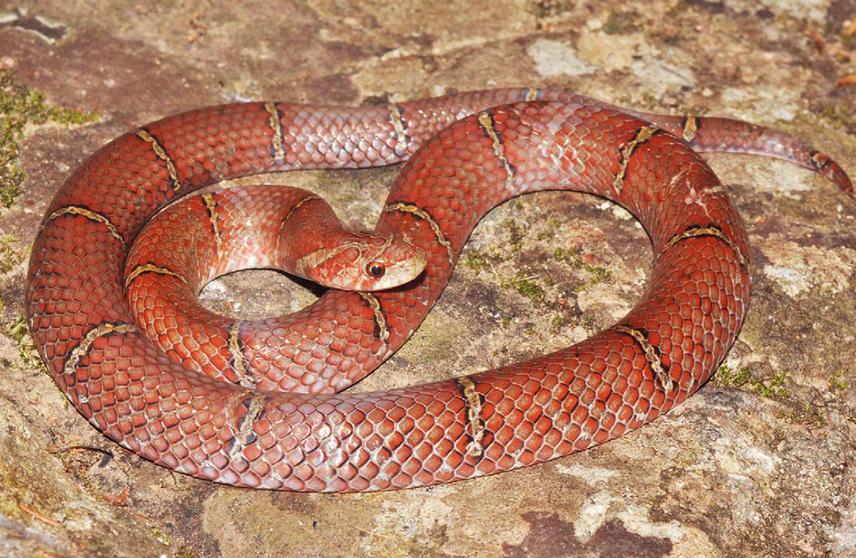Thy Neang
The aim of this project is to undertake structured inventory surveys to improve understanding and conservation of herpetological diversity at Phnom Samkos Wildlife Sanctuary and to build the capacity of Cambodian students in conservation biology.

Holotype CBC 01464 of O. kampucheaensis sp. nov. in life. ©Thy Neang.
Though recent research at Phnom Samkos Wildlife Sanctuary in SW Cambodia has revealed its global importance for biodiversity conservation, the majority of the sanctuary has yet to be explored by biologists. For instance, studies indicate that at least 77 reptile species occur at the site (including several newly described species) and have highlighted a need for research in unexplored areas to evaluate their priority for conservation. At present, the consequent lack of data hampers assessment of the importance and status of species populations and habitats in-situ, information vital for effective conservation management. This project will respond to this issue by undertaking reptile inventories at the sanctuary and by training future Cambodian scientists to follow suit.
Surveys will be undertaken in evergreen rainforests which differ in elevation and disturbance history. Two sites will be sampled in each forest type, each located at least three kilometres apart. At each site, one drift fence (length: 100 m; height: 60 cm) will be erected in riparian habitats and one in non-riparian habitats. Twenty pitfall traps will be placed along each drift fence at 5 m intervals. Drift fences will be checked for captures twice daily. Timed transect searches and opportunistic sampling will also be undertaken throughout the course of the field work. Individuals captured during the inventory surveys will be measured, photographed, identified and subsequently released. In a minority of cases however, voucher specimens will be required to identify species through examination at the Royal University of Phnom Penh.
This project will play an important role in improving understanding of the diversity and status of reptiles in one of the most bio-diverse and poorly known regions of Cambodia. Its findings will be used to prioritize and guide future conservation activities within the wildlife sanctuary and will assist IUCN in assigning correct ‘red list’ threat categories (fewer than 1% of Indochina’s lizards and snakes have been assessed to date, though it is probable that many are globally threatened). Information generated will also be distributed to relevant agencies in Cambodia and the training of students will assist them to become future conservationists with a strong commitment to Cambodian reptile research and conservation.